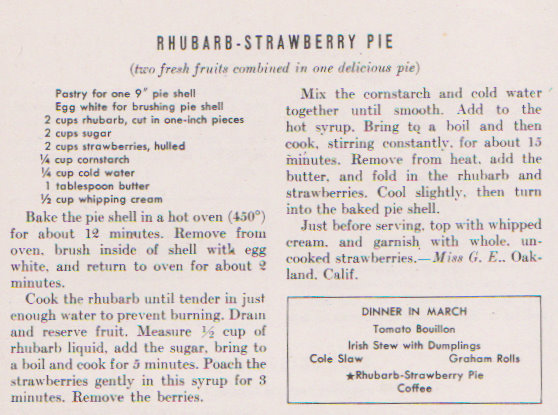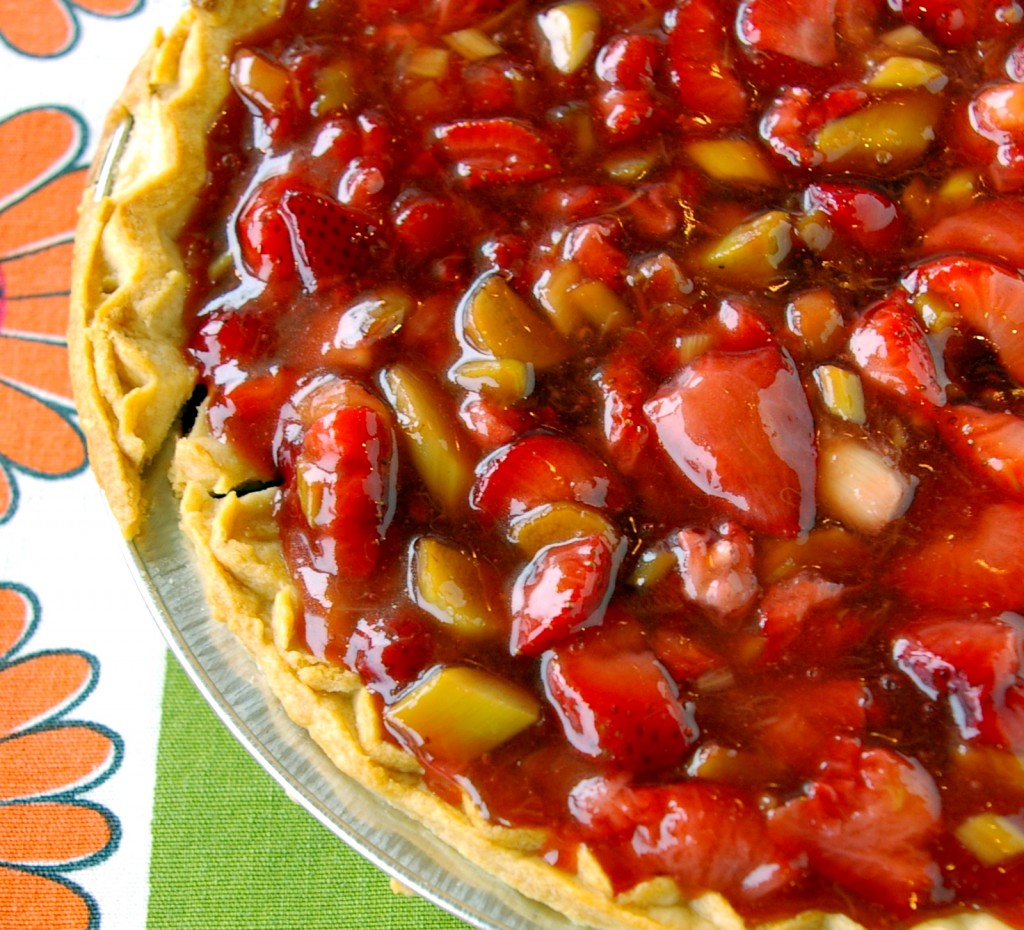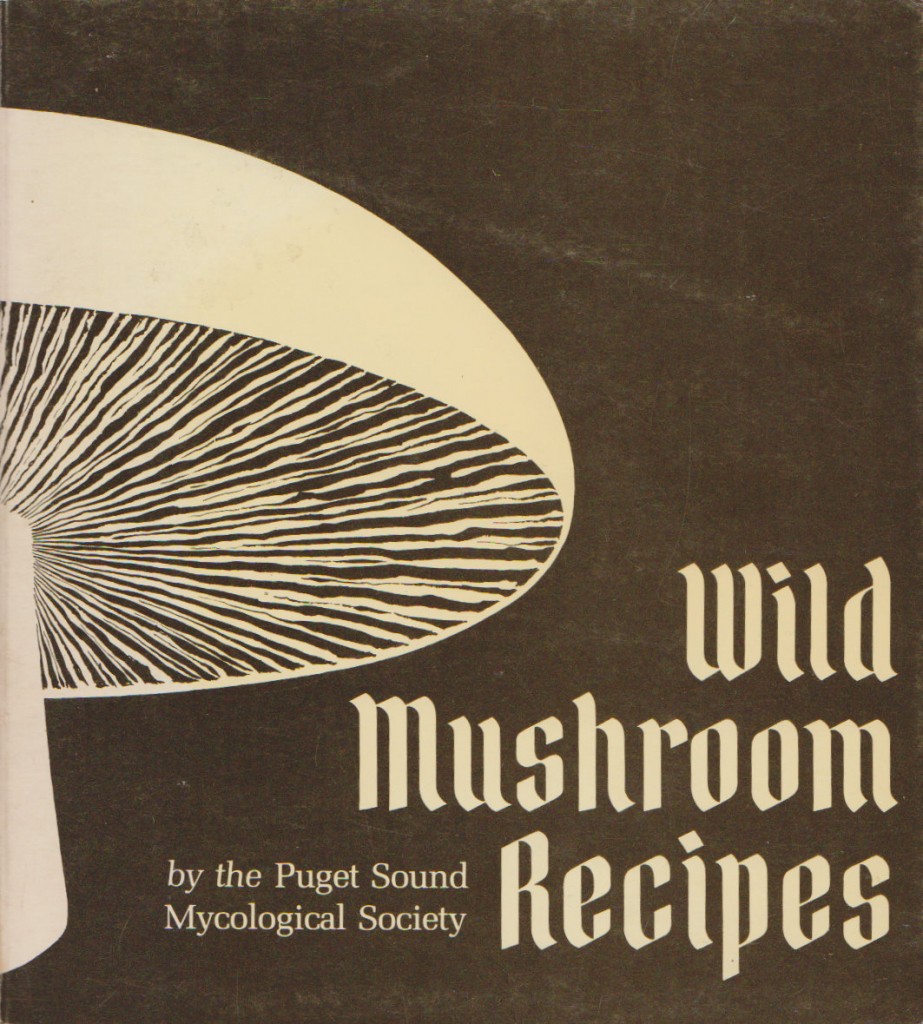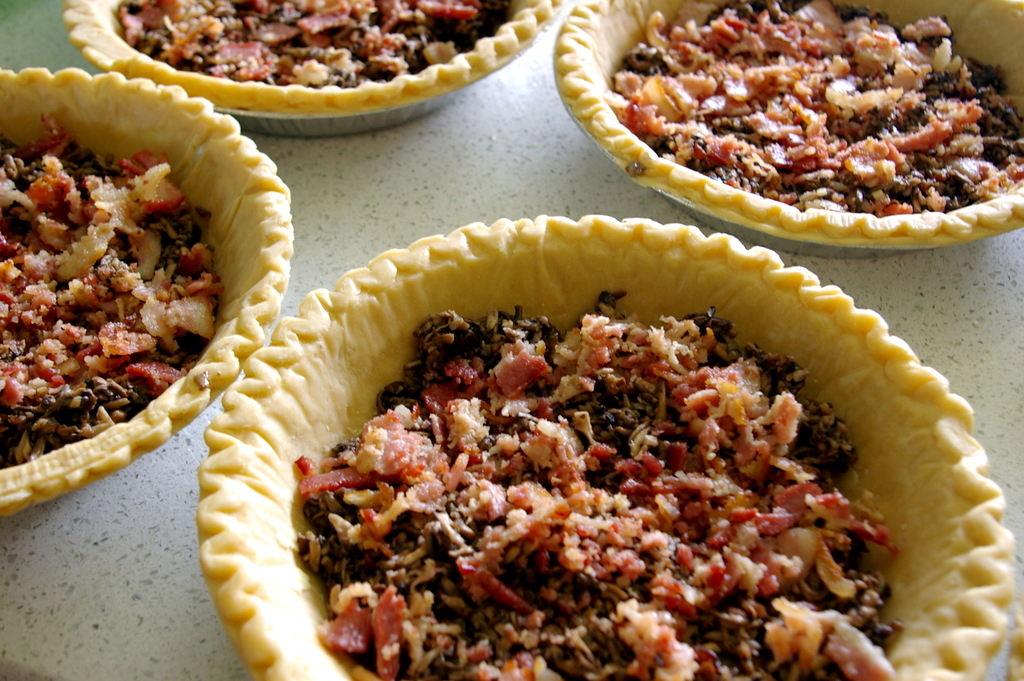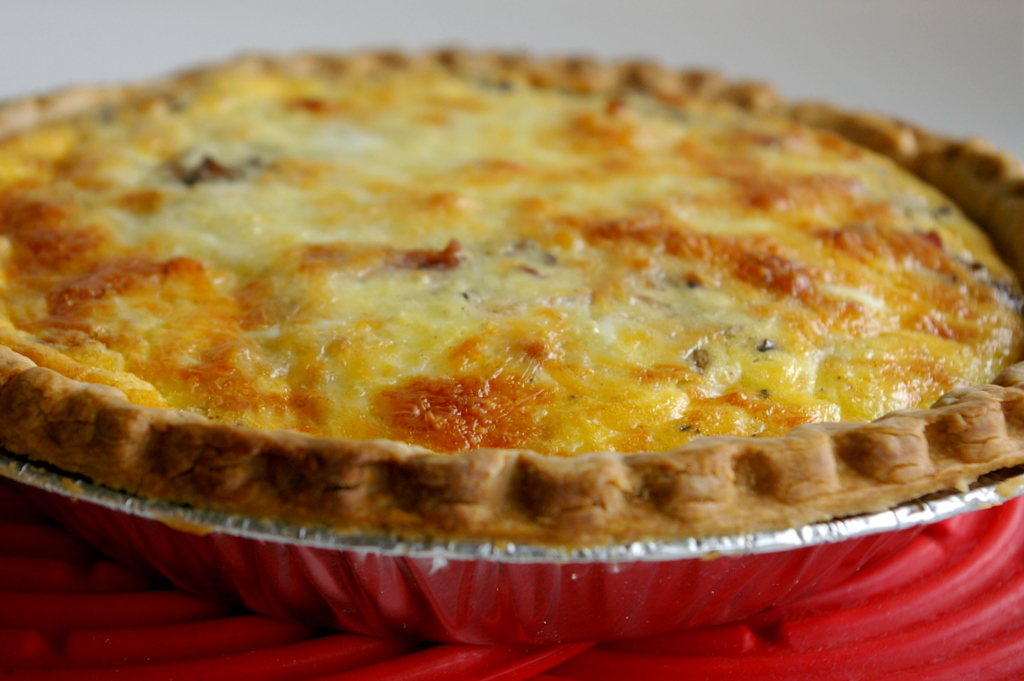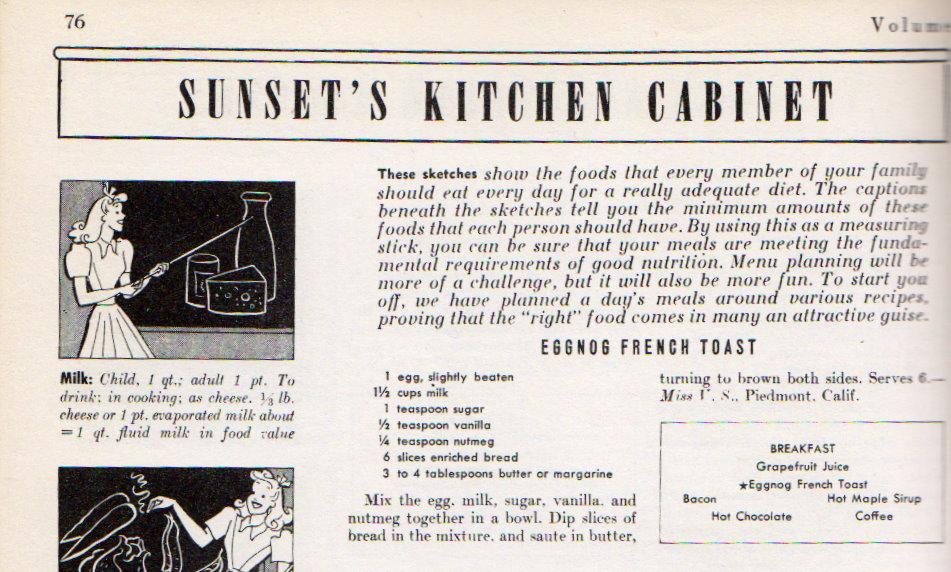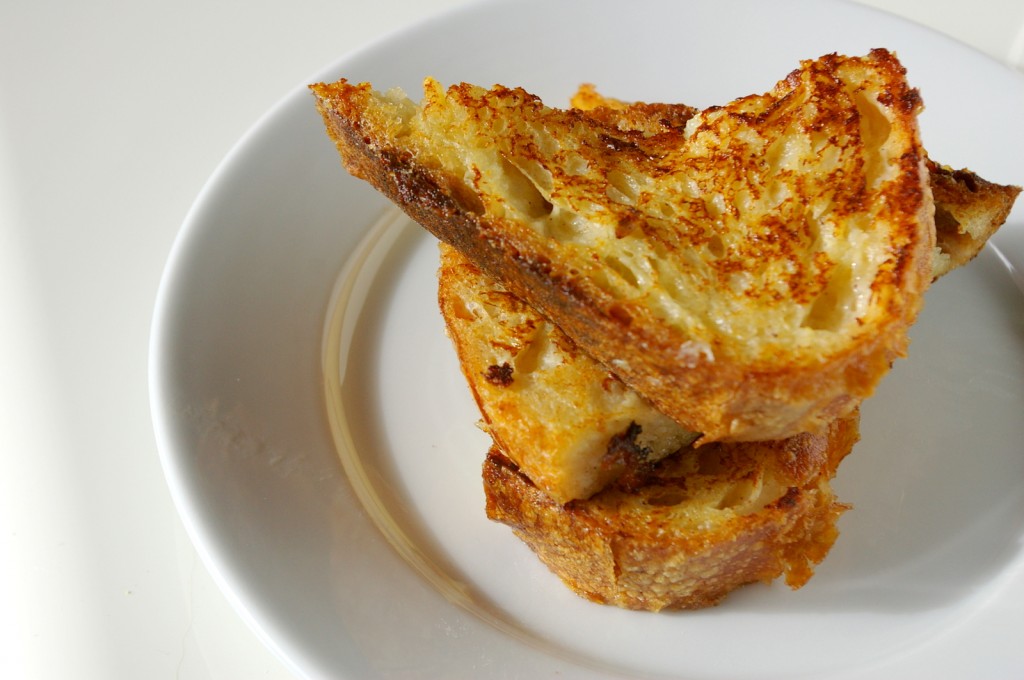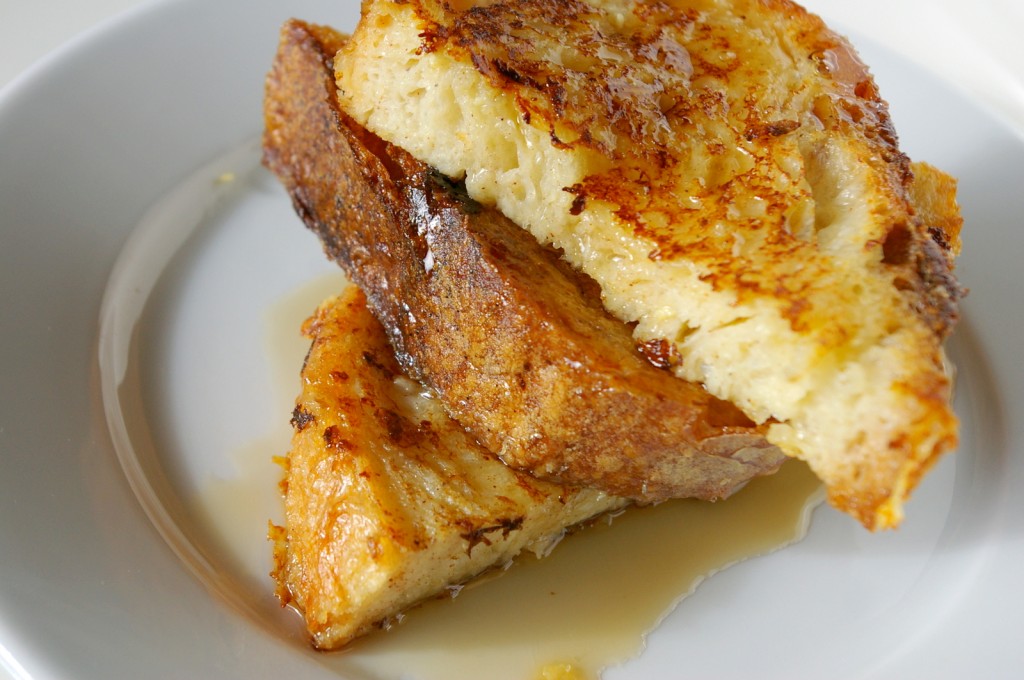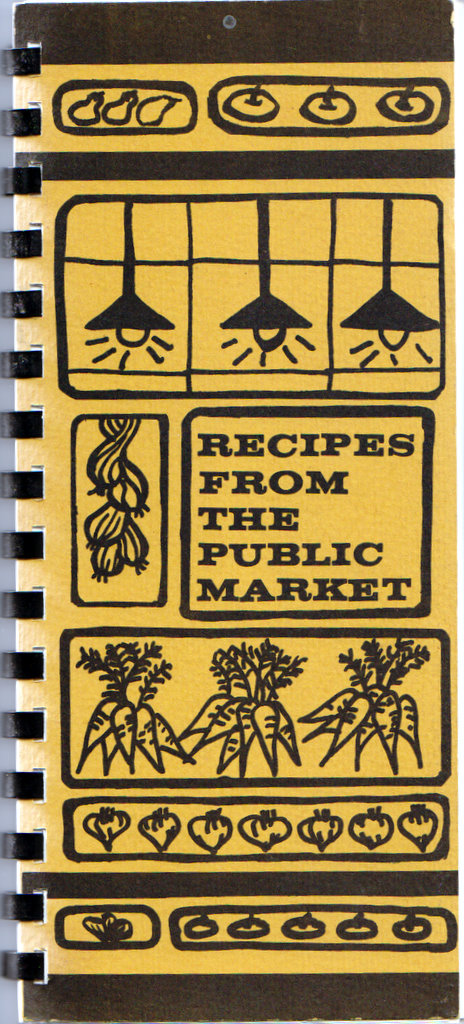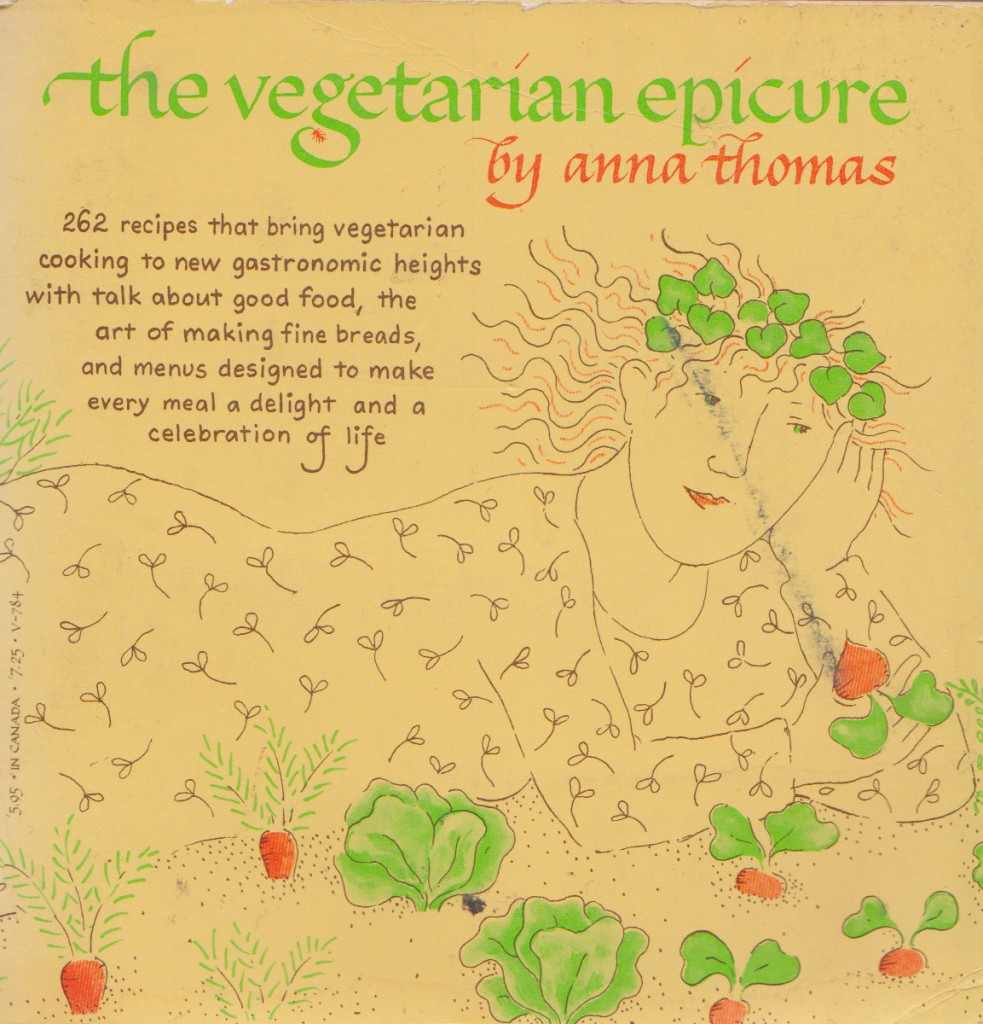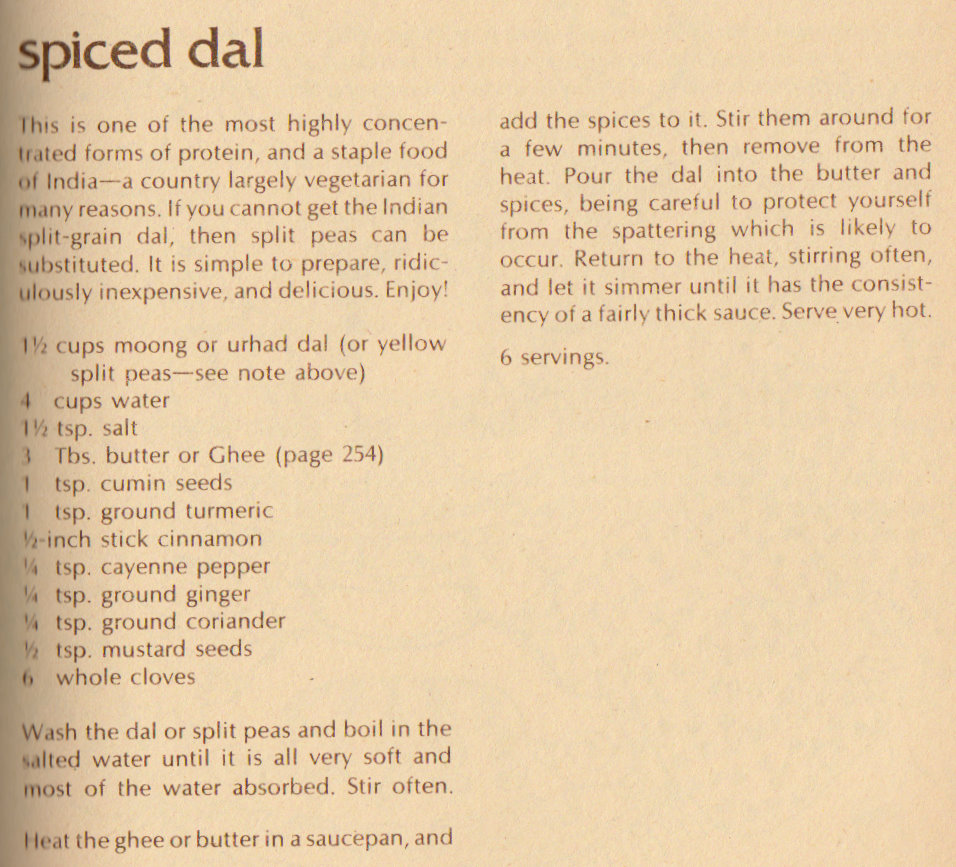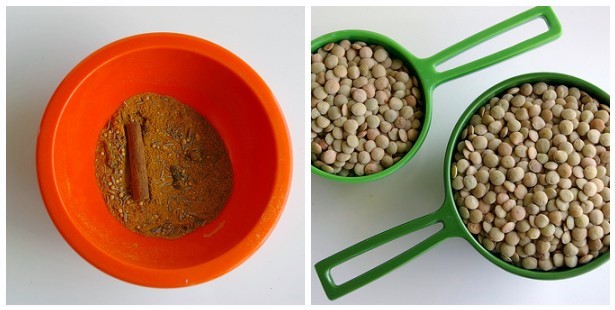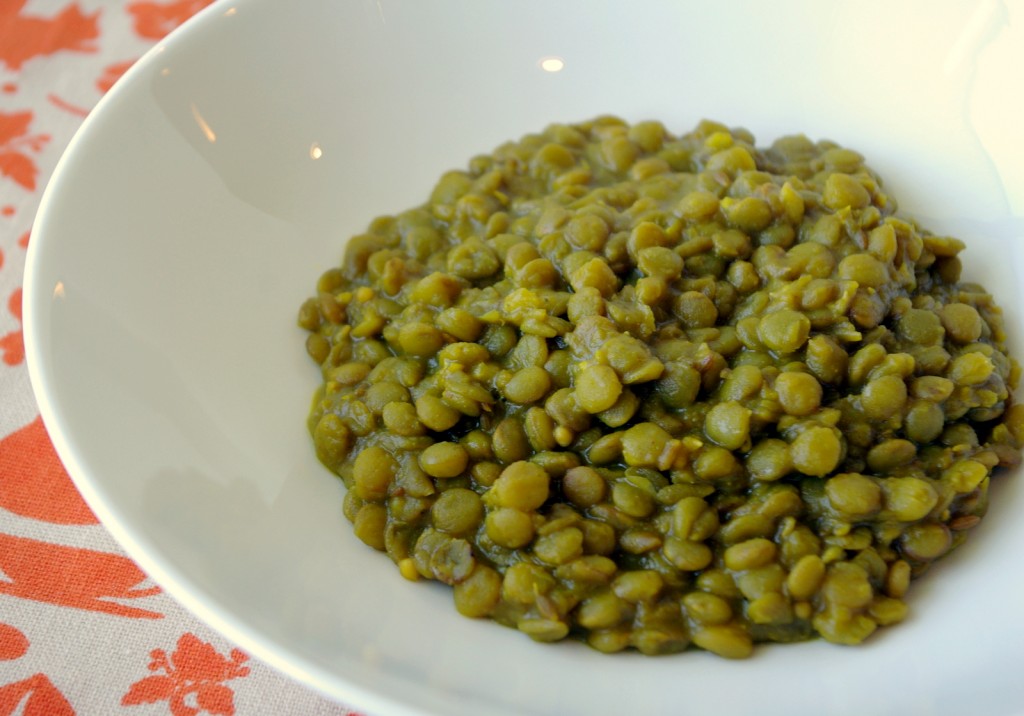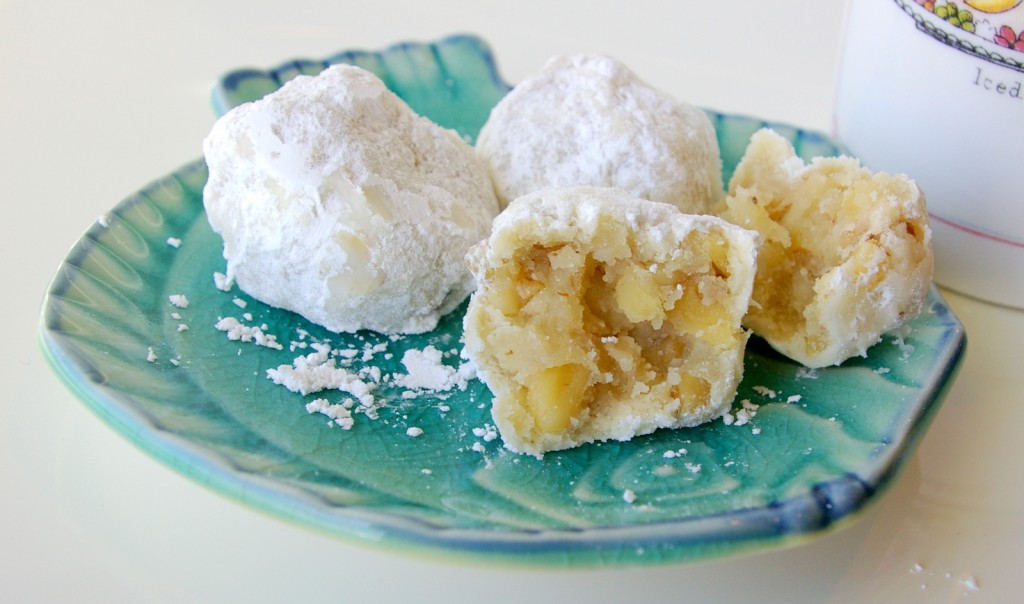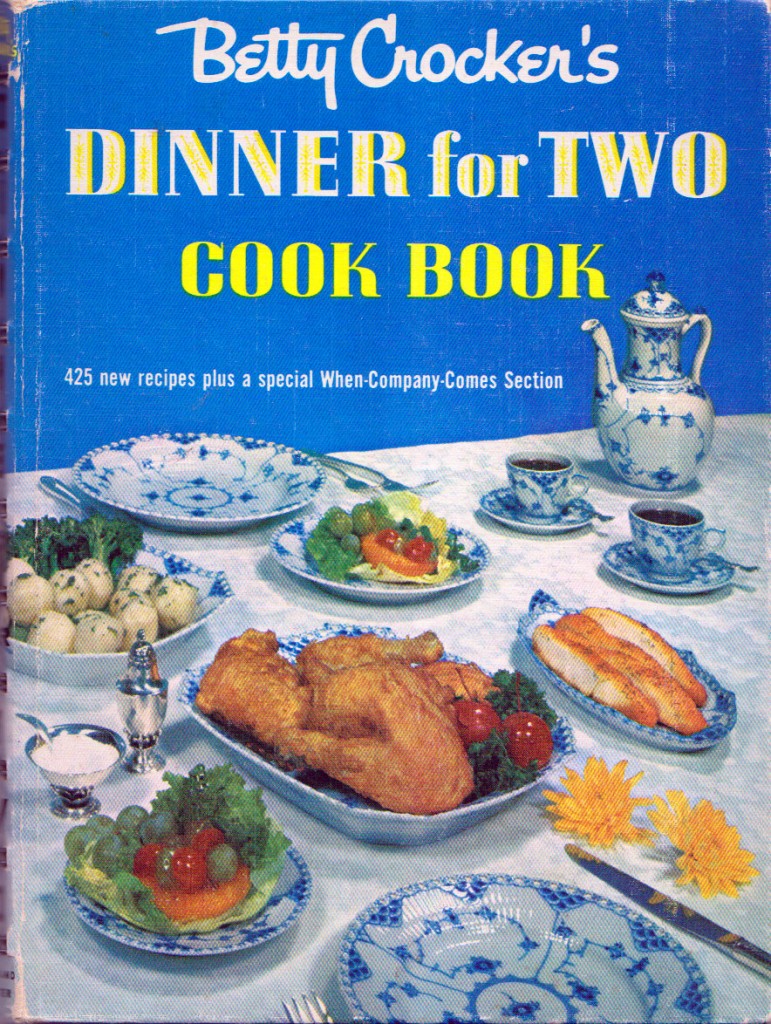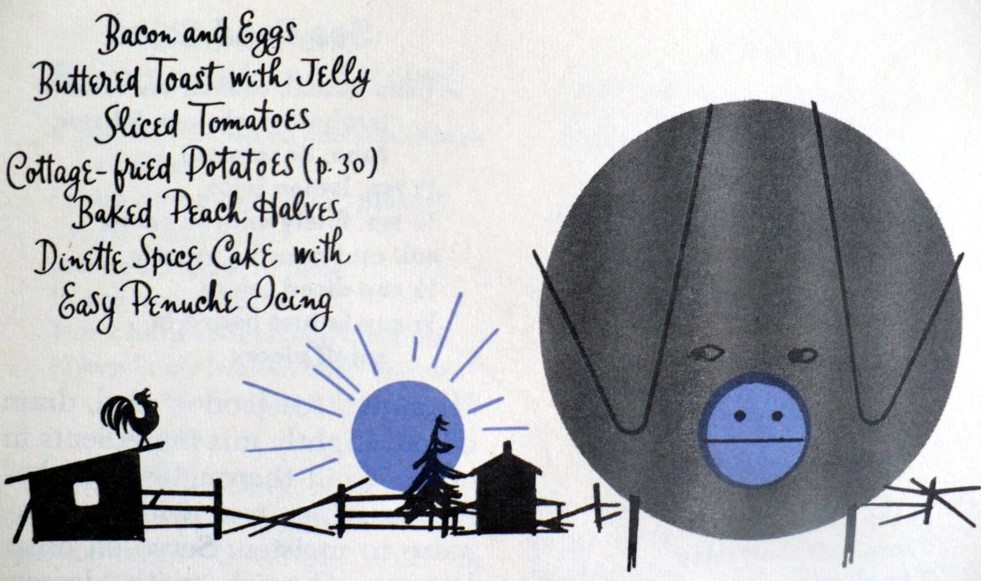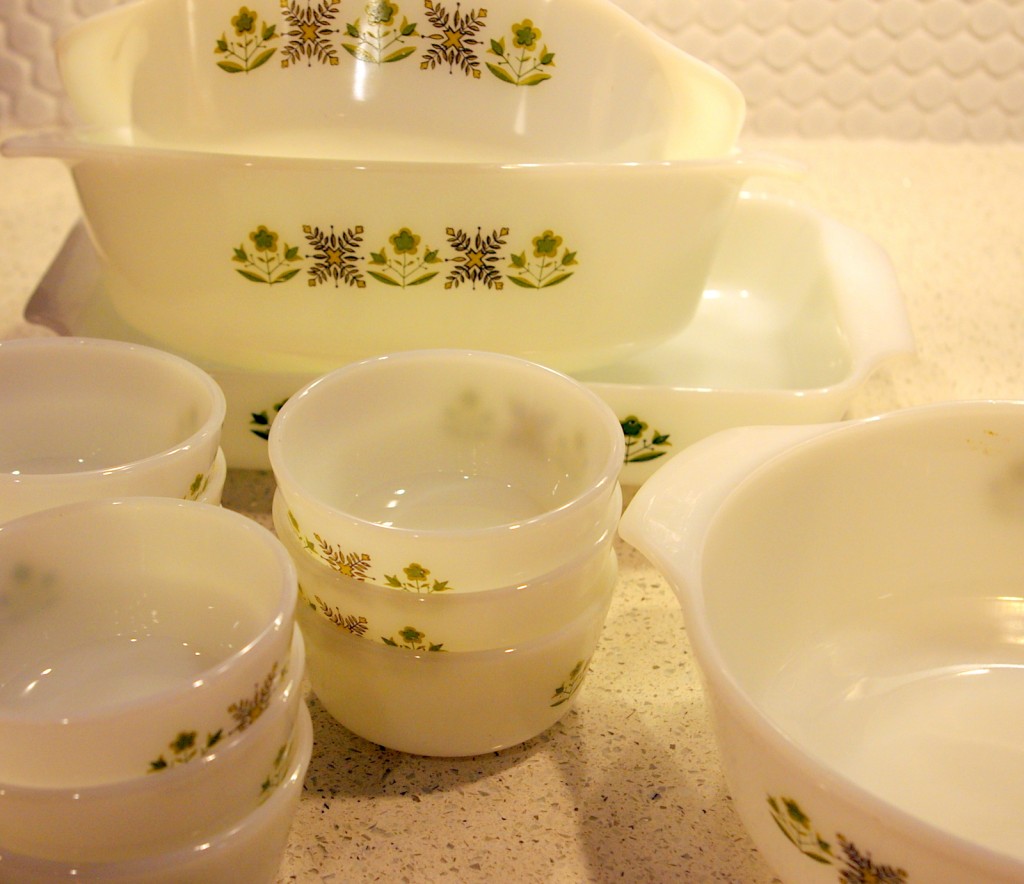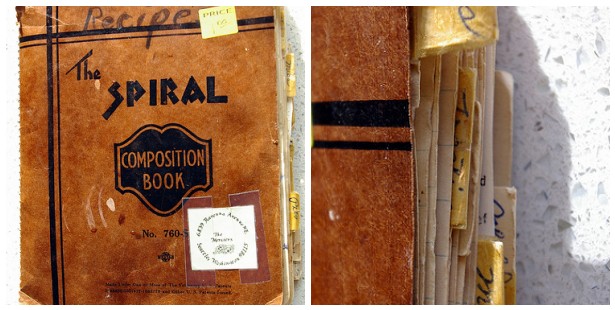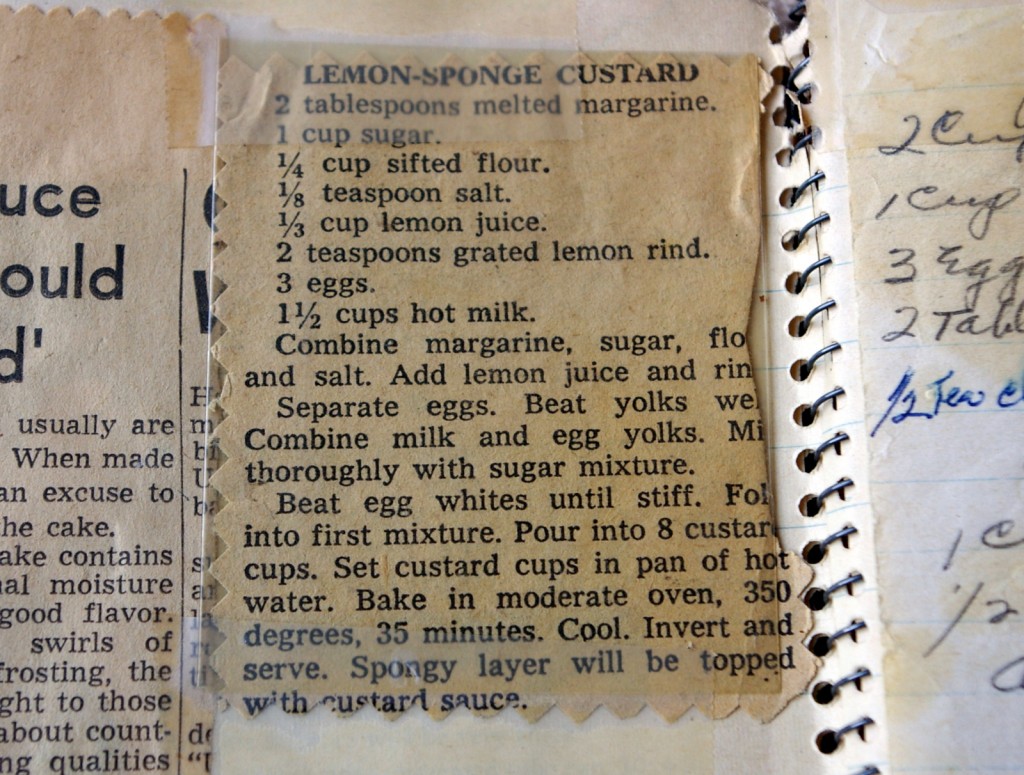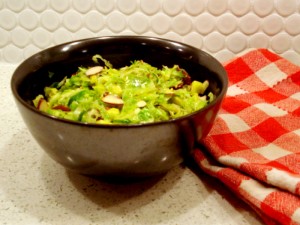Posts in Category: Recipes
Sweets for Spring
The previous owners of our house lived in it for over 40 years.  In that time, they did no landscaping except for a random clump of rhubarb we found in the back yard.  I was sad that we didn’t have any fruit trees or flowers, but I was more than happy with the rhubarb!  For the last two springs we’ve enjoyed harvesting our rhubarb and turning it into the sweetest of spring-time desserts.  This recipe is from Sunset’s Kitchen Cabinet Recipes, vol. 3, published in 1944.
When Kevin saw me chopping the rhubarb and strawberries, he immediately offered to make the dessert. Â I think he knew it would turn out perfectly and wanted all the credit! Â And, thanks to the awesome recipe and Kevin’s culinary skills, this was one of the best strawberry-rhubarb pies I’ve had. Â Kevin and I agree that we would add less sugar than the recipe called for, as it was a little too sweet. Â Just in case you needed a cute little comic to inspire you to make this yummy pie, here you go!
Did I mention that the colors of this pie were fantastic? Â Thank you, Kevin for making such an awesome dessert!
A Mycological Adventure
I promised to make an entrée for my choir’s annual charity auction and dinner, but I really wasn’t sure what to make.  It needed to be a recipe that I could easily scale to feed a large crowd and one that didn’t need to be served hot.  What’s a girl to do?  Serve quiche!  Thankfully, one of my vintage cookbooks, Wild Mushroom Recipes, published by the Puget Sound Mycological Society in 1978, had a lovely-looking recipe for a mushroom quiche that I had been eying.
The original recipe called for Sparassis mushrooms, and since I did not have time to learn how to forage for mushrooms, I substituted more readily available mushrooms for the less mycologically inclined cook.
Mushroom and Bacon Quiche
Adapted from Wild Mushroom Recipes
1 frozen pie crust
4 slices of bacon, fried crisp and crumbled
1 cup grated Swiss cheese
1 cup sautéed mushrooms (I used a mix of cremini, shitake, and oyster)
4 eggs
1 3/4 cup cream
1/8 tsp. nutmeg
1/4 tsp. salt
1/4 tsp. ground pepper
1. Sauté bacon until crisp and remove from pan.  Crumble bacon into small pieces.
2. Chop mushrooms and sauté in bacon grease for 5-7 minutes on medium-high.
3. Sprinkle bacon, mushrooms, and grated Swiss cheese into the pie shell.
4. Beat together eggs, cream, and spices and pour over bacon and mushroom mixture. Â Don’t over fill!
5. Bake for 35-45 min. at 375 until eggs are set and the top has browned. Â Serve either hot or cold!
I scaled this recipe and made 6 quiches, baking two at a time. Â I’m happy to report it was the first item at the auction dinner to be eaten up! Â I call it a resounding success!
Smiling in the Morning
I am a BIG fan of maple syrup.  Frankly, given the right mood, I could probably be convinced to sip some out of a coffee mug.  Dishes involving maple syrup are some of my favorites, which is probably why I’ve always loved brunch.  So when I ended up with some leftover bread from the Essential Baking Company last weekend, I knew just what to make!  It was just starting to get stale, so I left it out overnight, with dreams of maple syrup and buttery French toast dancing in my head.
I woke up before Kevin and began to search for a French toast recipe that sounded tasty.  Most of the ones I found in my various vintage cookbooks were all very basic, and while I like plain ol’ French toast, I really wanted something with some spices to wake up my taste-buds.
I was lucky enough to find a recipe for Eggnog French Toast from the third volume of the Sunset Kitchen Cabinet Recipes published in 1944.
I’m not sure why French toast is included in a section on meeting daily food requirements, but if maple syrups is ‘required’ eating, then I am definitely on board! Â I couldn’t wait for Kevin to wake up to start the French toast, so I ate mine with a cup of coffee, contemplating the sunny Seattle morning. Â It was some of the tastiest French toast I’ve tasted. Â The nutmeg and vanilla gave the dish the complexity I had hoped for and the maple syrup put a smile on my face for the entire day!
Before syrup:
After syrup!
Date Night!
We have a tradition at Chez Butter that we’ve kept up for a while now. Â We both love to cook, but given our work schedules, we don’t often get a chance to cook together. Â So every now-and-then we’ll have a ‘date night’ in which we both cook something fun, go for a walk, and watch a movie.
At a local estate sale we picked up a cookbook created by the Friends of Pike Place Market in 1965.  It’s a tall and skinny cookbook, filled with recipes from the market’s vendors and devotees as well as local restaurateurs.
Two recipes in particular caught our eye, both by Peter Canlis, the founder of Canlis, one of Seattle’s most decorated (and arguably most picturesque) restaurants. Â We decided to try both recipes for our date night.
Vintage Vegetarian
When I started this blog, I was a little worried: “I don’t eat cans of cream of mushroom soup every day, how am I going to make this work?” Â Like most people, my perception of old recipes are those infamous concoctions like Tuna Casserole and Tamale Pie, not the ones that are passed down and reused silently from generation to generation. Â Looking back to my post from last week, I think Russian Tea Cakes are one of those silent recipes that has been brought to Christmas cookie exchanges and potlucks for years.
Kevin and I tend to eat a lot a lot of local produce, whole grains, and not much meat, which runs counter to our perception of ‘vintage’ food, I think. Â Enter The Vegetarian Epicure, published in 1972. Â I almost jumped for joy when I saw this book at a local thrift shop. Â Indeed, as I flip through its pages, I find that most of the dishes have a very contemporary ring to them. Â So in honor of breaking our preconceptions about vintage recipes, I bring to thee, Spiced Dal, a healthful, vegetarian, vintage recipe!
I followed the recipe quite closely although, I have to admit, I used generic lentils because I had them on hand.
The end product was a lovely and hearty dish with a wonderful depth of flavor. Â I added a squeeze of lemon juice to brighten it up a bit. Â Serve with rice, quinoa, or naan!
My Afternoon Tea
When I worked in London, there was nothing I loved more than afternoon tea.  At 4pm, my colleagues’ eyes would light up and everyone would head over to the canteen for a cup of tea and a biscuit.  Tea always came at a perfect time of day for me, when my eyes were fogging up from too much squinting and my brain was slowing down.  Now that I’m back in Seattle, I miss my afternoon cuppa, so when I paged through one of my vintage Betty Crocker cookbooks and found a recipe for Russian Tea Cakes, I just knew I had to make them!
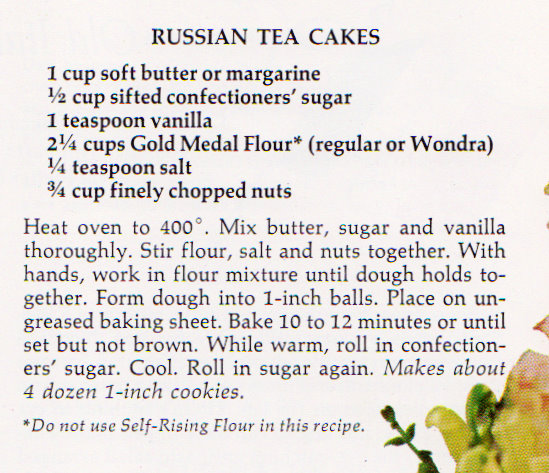 This recipe comes from the Betty Crocker Hostess Cookbook that I posted about earlier in the week. Â The recipe was easy to follow, although I had to add a few tablespoons of milk so that I could shape the dough into balls. Â That said, the tea cakes turned out perfectly: not too sweet, nutty, and very tasty with a cup of tea!
This recipe comes from the Betty Crocker Hostess Cookbook that I posted about earlier in the week. Â The recipe was easy to follow, although I had to add a few tablespoons of milk so that I could shape the dough into balls. Â That said, the tea cakes turned out perfectly: not too sweet, nutty, and very tasty with a cup of tea!
In Your Easter Bonnet
Some of my favorite cookbooks are the Betty Crocker cookbooks from the 1950s and 1960s. Â They’re full of wonderful illustrations, wacky recipes, and vintage tablescapes. Â In honor of today’s beautiful weather and an Easter spent with lovely friends, I’m posting two recipes for everyone’s favorite vintage appetizer, the deviled egg, from my favorite Betty Crocker cookbooks.
The first book, Dinner for Two, was published in 1958. Â The first edition of this cookbook has amazing illustrations by none other than Charley Harper, known for his modernist prints of wildlife. Â Needless to say, the cookbook is an amazing repository of Harper’s illustrations! Â (Be warned, fellow collectors, the subsequent editions of this cookbook do not have Harper’s illustrations, only the first!) Â Here is one of my favorite images from Dinner for Two!
The Story of Our House
A few of you commented on the ramekins I used in our last post. Â Where did they come from, you ask? Â They actually came from our house. Â Kevin and I moved to Seattle from Southern California almost two years ago. Â In the autumn of 2008, we started looking for a house, but–being the picky people we are–we couldn’t find one that was perfect. Â During this time, we drove past an estate sale and wandered in. Â The house was a wreck: it hadn’t been updated in 30 years, everything was threadbare and dirty, and I remember saying to Kevin “well, at least we’re not looking at this house. Â (Famous last words, trust me.) Â I found a box of Anchor Hocking casserole dishes and ramekins at this estate sale in the Meadow Green pattern, which was produced between 1967-1977.
To make a long story short, we bought the house a few months later and it became our threadbare and dirty house! Â Originally, Kevin and I were searching for a ‘time capsule’ house that had vintage style and didn’t need much work. Â Sadly, they were out of our price-range, so we had to make some major renovations to the house in order to turn it into a place we’d be proud to call home. Â But that’s the subject of another post–back to the ramekins!
A Lemon of a Sale
Kevin and I have a bit of a tradition on Saturday mornings.  He and the cats sleep in a little and I make coffee and peruse Craigslist for any estate sales that are happening nearby.  We are never first in line–I don’t like the antique dealers, who get there an hour early and make numbered lists as to who gets in first.  I’m more interested in looking at the mise en scène of a house and seeing how people lived their everyday lives than being the first in line and jostling about.  I have a certain reverence when I go to estate sales because the fact that it’s a person’s life that’s on display is never far from my mind.  One can find out so many things about people by searching through the flotsam and jetsam — I can only imagine what people will say about my own treasures.
This Saturday, we decided to visit a neighborhood in Northern Seattle. Â The house was unassuming and had a bird bath and feeder in the front (as a fellow bird-lover, I took that as a good sign). Â We walked up the back steps into the kitchen and listened to the daughter, who was running the sale, talk about her late mother to a person buying a few knick-knacks. Â Kevin soon came up to me with an old, spiral-bound notebook, going for $1, that was filled with recipes.
I couldn’t believe it was for sale, but I knew immediately that it would be well-loved in my home. Â It’s previous owner had made tabs for each type of recipe, and after giving it a once-over, it was obvious that she loved making desserts! Â Kevin and I had already talked about posting something lemony this week since we had a few lemons who kept looking at us longingly from the fruit basket. Â Luckily, our newly-found recipe book had a few recipes for lemon desserts, and since we were having friends over for some home-made pizzas, we decided to try the recipe for Lemon-Sponge Custard.
The Much-Maligned Sprout
I sing to thee of a humble sprout, made delectable with darkened butter, tart lemon, and toasted almonds!
Most everyone has bitten into an over-cooked Brussels sprout, ripe with glucosinolate sinigrin, which–according to Wikipedia–gives off a sulfurous odor and is probably the reason behind the widespread dislike of the poor little cabbage.  But cooked correctly, the Brussels sprout is a vegetable of an epic nature (hence my earlier invocation).  Indeed, Fanny Merritt Farmer includes Brussels Sprouts with Curry in her cookbook, Food and Cookery for the Sick and Convalescent, as an aid for diabetes.  Judging by the numerous recipes for Brussels sprouts available from the early twentieth century in Google books, they were quite popular.  In most of my mid-century cookbooks, nary a Brussels sprout is to be found, which makes me wonder if many 1950s cooks avoided them because of bad childhood experiences!
Then, as I mentioned earlier this week, I found my New York Times Cookbook. Â Claiborne has two recipes for Brussels Sprouts: one with caraway seeds and another with browned butter. Â He suggests that Brussels sprouts should be cooked whole, with a gash in the stem. Â I prefer slicing the sprouts ever-so-finely instead, so my take on his recipe reflects that. And apologies for the horrible photo — the whole bunch was a little off-color, even with correction.
Brussels Sprouts with Browned Butter and Toasted Almonds
(adapted from the 1961 New York Times Cookbook)
1 pound Brussels sprouts, finely sliced
2 tbsp. butter
1 tbsp. olive oil
2 tbsp. lemon juice
1/4 c. sliced almonds, toasted
salt and pepper to taste
1. Â Preheat oven to 350. Â Place almonds on a baking sheet and toast for 10 min.
2. Â Slowly melt 2 tbsp. of butter in frying pan and cook until just starting to brown.
2. Add olive oil and Brussels sprouts and sauté for 3-4 minutes.
3. Remove Brussels sprouts from heat and add lemon juice, almonds, salt and pepper.
Et voilà ! We had ours with some halibut poached in white wine and lemon juice.  It was a wonderful dinner!
Go visit Foodie Friday for more yummy recipes!
